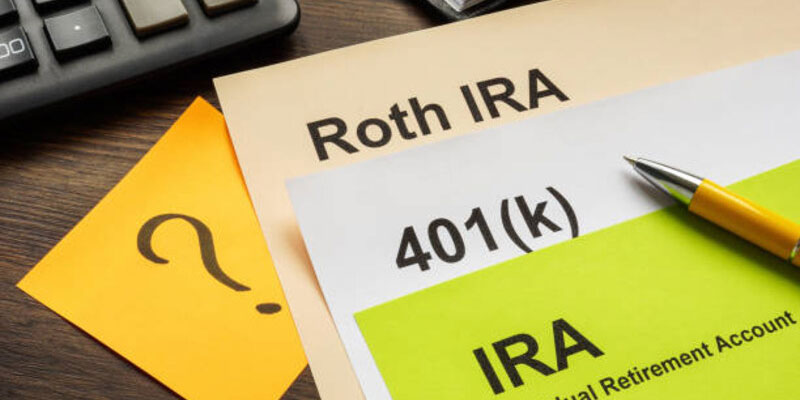Being an investor, it is essential to understand if the firm is doing well financially. However, by calculating earnings, costs, liabilities, and other factors via net Debt, one may quickly ascertain the image or financial standing of the organization. It is simpler to assess the organization's financial situation using a net debt calculation. See the details below to learn more about net Debt and its calculation.
All about net Debt

By evaluating the firm's liquid assets towards its overall Debt, Net Debt is a statistic used to gauge its financial strength and help determine if it can meet its commitments. Simply put, it is the ratio of the firm's earnings to its liquid assets, measured as Debt less cash and its equivalents.
If the ratio is more than 1, the business has more Debt than total assets. The business would be unable to pay its obligations if all its creditors demanded payment immediately without selling brief assets. In contrast, if the ratio is smaller than one, the corporation has far more than enough accessible assets to cover its debts.
How to determine net Debt

After using its cash to aid pay it down as much Debt as feasible, a firm's net Debt is the amount that remains.
The statistic would display the residual debt amount if a firm's money and cash equivalents were utilized to pay down its existing debt commitments. It is often used to assess a company's liquidity.
The fundamental principle underlying net Debt is that, in the hypothetical case, cash on a firm's balance sheet might be utilized to pay off existing Debt.
The amount of a firm's cash equivalents are subtracted from the gross Debt since it is assumed that money helps reduce the debt load.
Two phases go into determining a firm's net debt balance:
- Calculate the total of all debts and interest-bearing payments
- Deduct the sum of the cash and its equivalents.
Net debt formula
Net debt= Short-term debt + long debt - cash and cash equivalents
Finding short-term debts with a 12-month payment window is the first step in computing the net debt calculation. Add each of the firm’s short debts after that.
Finding long-term obligations, which must be repaid over more than one year, is the second phase. Add all of the company's long-term debts after that.
Assets of the business (those efficiently or reliably transferred or converted into cash)
The last step is to sum up, all of the Debt, both short- and long-term, and then remove all of the money and cash equivalents from that amount.
An illustration
The following things are stated in Firm XYZ's balance sheet:
- 120,000 in bank overdraft
- Payables for machinery: 70,000
- Receivables for machinery: 170,000
- 600,000 in bank loans
- 750,000 in cash in the bank
Let's start by listing short-term debts. In this illustration, because they are both dues within a year, the bank overdraft and the payables for machinery are both short-term commitments. Machinery payables are the credit-based purchases that business XYZ must repay within a 12-month fiscal year. However, an overdraft is a maximum amount it will allow above the amount in the account. It implies that, up to a particular amount set by the bank, the business may continue to conduct transactions even if its balance is zero.
120,000 + 70,000 = 190,000 is the total amount of short-term Debt.
Then follows long-term obligations, which only include a bank loan since it is repayable over a more extended period. It seems sensible that a bank loan always has a more extended repayment period than a year.
Debt Long Term = 600,000
The cash transactions, in this example, the accounts receivable for equipment and the cash in the bank, must now be identified and totaled. Sales made on credit during the year are considered machinery receivables.
170,000 + 750,000 equals 920,000 in cash and cash equivalents.
Calculating XYZ Company's Net Debt is the last stage.
Net Debt is 190,000 + 600,000 less 920,000, or -130,000.
It is encouraging if the Net Debt number is harmful since it indicates that ABC has adequate cash to pay its obligations.
An important thing to note
The net debt computation should not be examined in isolation, as with another profitability ratio. To get a complete view of the company’s fiscal situation and level of leverage, it's crucial to combine this statistic with other liquid and solvency ratios, including the net profitability ratios, the cash conversion cycle, and the Debt ratio to equity. Comparing this indicator to other businesses in the sector is also crucial. It's crucial to establish a baseline since various businesses funds differently.
For instance, substantial Debt is prevalent in sectors such as mining, drilling, and building that depend on expensive technology. In contrast, businesses in service-based sectors, like public practice, often have little liabilities on their account balances. If the firm's total Debt is more outstanding than the industrial average, the company may not be able to fulfill its obligations in the end, which might result in a decline in the share price. Business trends should constantly be considered to make relevant decisions.
Let's wrap up
By contrasting a firm's total Debt to its liquid assets, net Debt is a good investment statistic used to assess a company's capacity to meet its commitments. Even in other words, the ratio of Debt to assets for a corporation is shown by this computation—reduced net value results from more Debt and higher cash and cash equivalents. A lower number suggests that the business is performing well. It implies that the business has excellent financial standing and can pay off its Debt.




